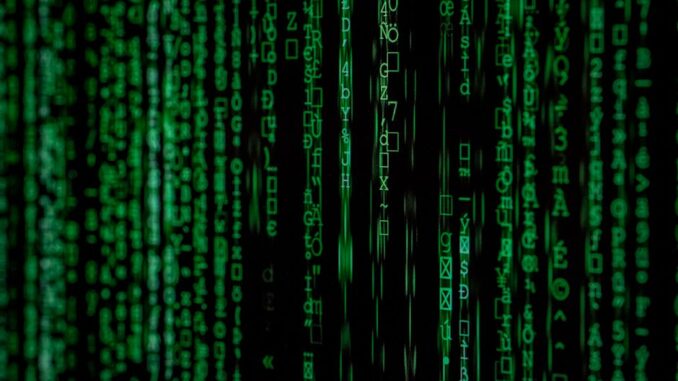
Summary
Thousands of Australian pension accounts compromised in a coordinated cyber attack targeting major super funds. Hackers focused on retirees in the pension drawdown phase, exploiting stolen credentials to potentially steal retirement savings. Government agencies, regulators, and industry players are coordinating a response to address the breach and enhance cybersecurity measures.
Dont let data threats slow you downTrueNAS offers enterprise-level protection.
** Main Story**
Cyberattack Shakes Australia’s Pension System, Thousands of Accounts Breached
A sophisticated, coordinated cyberattack has rocked Australia’s pension system, compromising over 20,000 accounts across several major superannuation funds and raising serious concerns about the security of the nation’s \$3.5 trillion retirement savings industry. This attack, occurring over the weekend of March 29-30, 2025, and publicly disclosed on April 4, 2025, specifically targeted retirees eligible for lump-sum withdrawals, exploiting vulnerabilities in the system to potentially steal significant amounts of retirement savings. As of today, April 7, 2025, investigations are ongoing, and the full extent of the damage is still being assessed. This situation is developing and information is subject to change.
Pensioners Targeted, Weak Authentication Exploited
The cybercriminals strategically targeted members in the pension drawdown phase—retirees eligible to receive lump-sum withdrawals—as these accounts offer the easiest access to substantial funds. Normal superannuation accounts have stricter withdrawal restrictions, making them less appealing targets. The attackers appear to have exploited weak authentication measures, including the use of stolen passwords obtained through credential stuffing, a technique where hackers use lists of compromised usernames and passwords from other data breaches to try and access accounts on different platforms. Reports indicate that hackers altered passwords during off-peak hours, likely in an attempt to bypass mobile alert systems and delay detection. One AustralianSuper customer reportedly lost \$300,000, highlighting the devastating financial impact on individuals.
Major Super Funds Confirm Breaches, Government Response Underway
Several of Australia’s largest superannuation funds, including AustralianSuper, Hostplus, Rest, Insignia Financial (owner of MLC), and Australian Retirement Trust, have confirmed they were targeted in these attacks. AustralianSuper, the country’s largest fund with over 3.5 million members and managing \$365 billion in assets, reported that up to 600 members’ passwords were stolen and used to access accounts. While they have locked the affected accounts and notified the members, AustralianSuper Chief Member Officer, Rose Kerlin, urged all members to check their online balances and take precautions to secure their accounts. Rest Super reported roughly 8,000 accounts impacted, while Australian Retirement Trust detected suspicious login activity on several hundred accounts and took precautionary measures to lock them down. Insignia Financial confirmed their Expand platform was hit by credential stuffing, impacting approximately 100 customer accounts.
Australia’s National Cyber Security Coordinator, Michelle McGuinness, confirmed they are tracking the cybercriminal activity and coordinating a government-led response involving regulators and the industry. Prime Minister Anthony Albanese has been briefed on the situation and promised a “considered” response from government agencies. This latest attack follows several other high-profile data breaches in Australia in recent years, emphasizing the growing threat of cybercrime and the need for stronger security measures.
Strengthening Cybersecurity, Protecting Retirement Savings
This attack serves as a stark reminder of the vulnerability of online systems and the importance of robust cybersecurity practices. Superannuation funds must prioritize strengthening their security measures, including implementing multi-factor authentication, improving password management policies, and educating members about online safety. Individuals should also take proactive steps to protect themselves, such as using unique and strong passwords for each online account, enabling multi-factor authentication whenever available, and remaining vigilant for suspicious activity. Regularly checking account balances and reporting any unauthorized transactions is crucial.
The coordinated attack on Australia’s pension funds has exposed critical gaps in the industry’s cybersecurity defenses and underscores the urgent need for a comprehensive review of current practices. The government, regulators, and the superannuation industry must work together to enhance security measures, restore public trust, and ensure the long-term protection of Australians’ retirement savings. This incident also raises concerns about potential future attacks, highlighting the need for ongoing vigilance and proactive measures to stay ahead of increasingly sophisticated cyber threats. The coordinated government and industry response will be crucial in mitigating the damage and preventing similar incidents in the future.


Pensioners targeted? Someone needs to tell these hackers that retirees are experts at spotting scams. Maybe they should have tried targeting politicians instead; much bigger wallets and probably worse passwords. Just a thought!